|
Trimaster's 1/48 scale
Focke-Wulf Ta
152H
by
Chris Wauchop
|
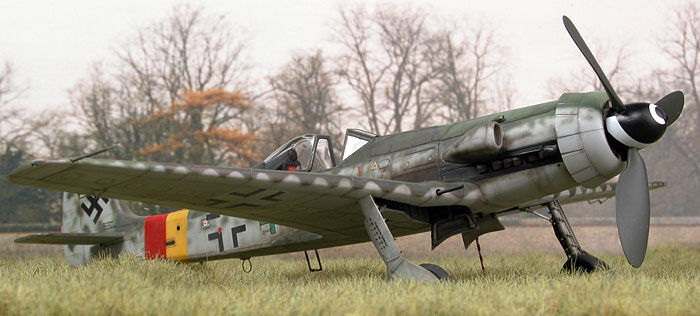 |
|
Focke-Wulf T 152H |
images by Brett Green

HyperScale is proudly supported by Squadron.com
Chris Wauchop's latest
project is Trimaster's 1/48 scale Focke-Wulf Ta 152H high altitude
fighter.
The model is finished in
the markings of Walter Loos of Stab/JG 301 while based at Neustadt-Glewe
in Germany during April 1945.
This is an original
Trimaster boxing, so the quality of the plastic is better than the
material found in the later re-releases by Dragon. In Dragon kits, the
wings are frequently badly warped, but this was not a problem in Chris's
Trimaster kit.
However, many of the
details later reproduced in plastic were supplied in metal for
Trimaster's premiere release. This led to a few complications, including
the tail wheel breaking off its mount. The parts were drilled and
pinned, resulting in an unintended but nevertheless effective castoring
tail wheel.
Prior to construction, Chris
added lines of rivets to the fuselage sides using the tip of a needle.
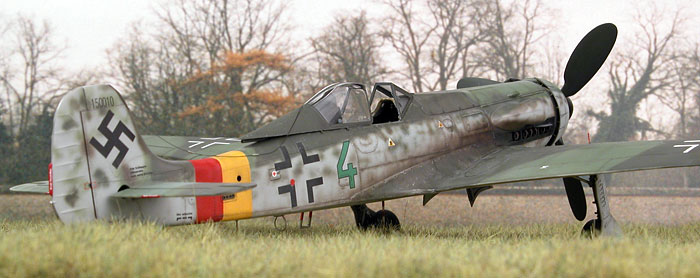
The kit is nicely details
straight from the box, but Chris made the following additions and
enhancements:
-
added brake lines to the
landing gear legs from fine solder
-
added tyre air filler
hose to the wheels from fine solder
-
added landing gear
indicators from fine brass wire
-
slack radio antenna wire
from nylon monofilament (smoke-coloured invisible mending thread)
with isolators from white glue.
-
DF loop replaced with
bent staple from a Tamiya plastic bag
-
aerial on bottom of
Morane mast replaced with fine wire.
Painting
 The
model was painted using the Testor Aztek A470 airbrush. The
model was painted using the Testor Aztek A470 airbrush.
Paints used included the following:
-
Exterior
-
Gunze acrylic H417 RLM
76 Light Blue
-
Gunze acrylic H422 RLM
82 Light Green
-
Gunze acrylic H423 RLM
83 Dark Green
-
Gunze acrylic H344 -
Rust on exhaust stacks
-
Gunze acrylic H65
RLM Black Green

-
Interior
-
Gunze acrylic H70
RLM 02 Grey
-
Tamiya acrylic XF-64
Dark Grey
-
Tamiya acrylic X-18
Semi-Gloss Black
Chris employed his usual
weathering techniques, including post-shading panel lines with a thinly
sprayed mix of Tamiya acrylic Red
Brown and Black. Wing walks, cowl panels and the canopy were also
"chipped" using the point of a silver artist's pencil.
Weathering was kept relatively light though, as these aircraft did not
see much action before the end of the war.
Prior to applying decals, Chris polished the surface of
the model with a fine cloth. This removed some paint from the raised
lips of the rivet holes, adding subtle emphasis.
Markings
Decals were sourced from Kagero's publication, "JG 301
Wilde Sau" by Marek J. Murawski and Peter Neuwerth.
National markings from the Trimaster kit were used.
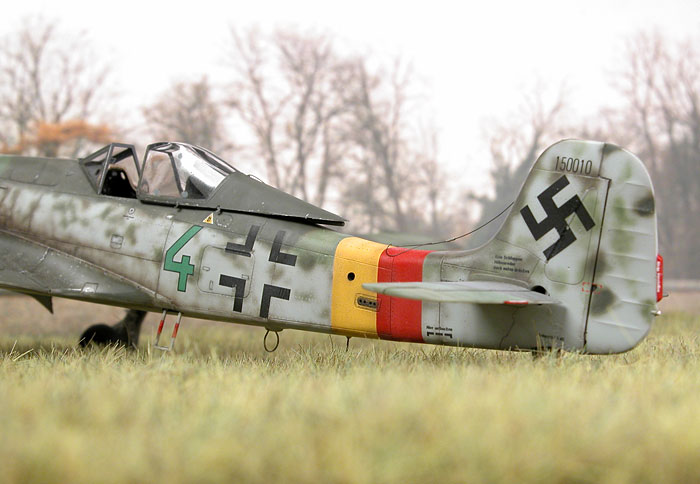
All the markings sat down nicely without any trouble.
When Trimaster's 1/48 scale Ta 152H was released in the
1980s, it set a new standard for models of WWII aircraft models. Now,
two decades later, the original boxing still compares favorably with
many new releases in terms of detail, surface features and accuracy.
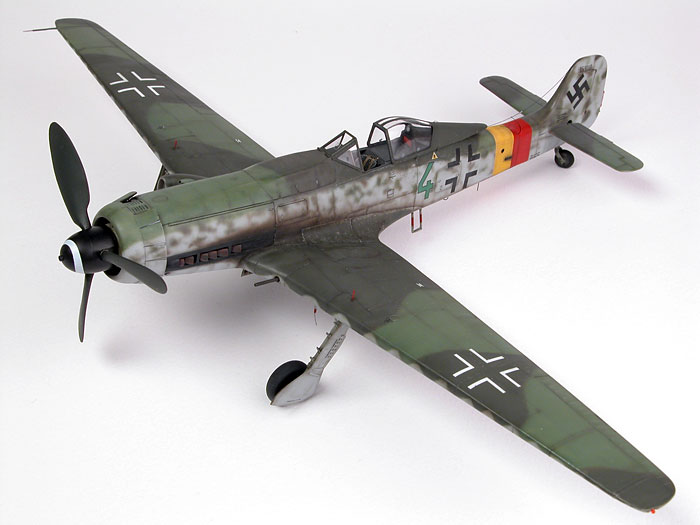
Trimaster's 1/48 scale Ta 152H may not be the easiest
kit to build, but it certainly delivers an authentic replica of an
interesting late-war Luftwaffe machine from a historically significant
model company.
Chris completed the model in
a total of 69 hours.
Photography
The photos were taken with a Nikon Coolpix 5700 digital
camera and optimized in Photoshop CS.
The model was photographed on a base of artificial grass and dirt
against a large photo of trees and skyline. A second set of photos was
taken against a plain white background.
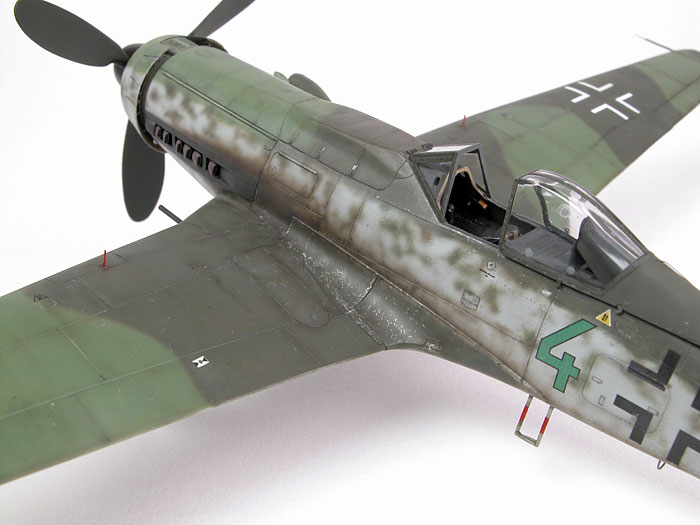
Finally, the images were cropped, resized to 700 pixels in
width, and saved as a .jpg file for posting on HyperScale.
Reference
Click the
thumbnails below to view larger images:
Model by Chris Wauchop
Text Copyright © 2005 by Chris Wauchop &
Brett Green
Images Copyright © 2005 by
Brett Green
Page Created 22 February, 2005
Last Updated
22 February, 2005
Back to
HyperScale Main Page |
Home
| What's New |
Features |
Gallery |
Reviews |
Reference |
Forum |
Search